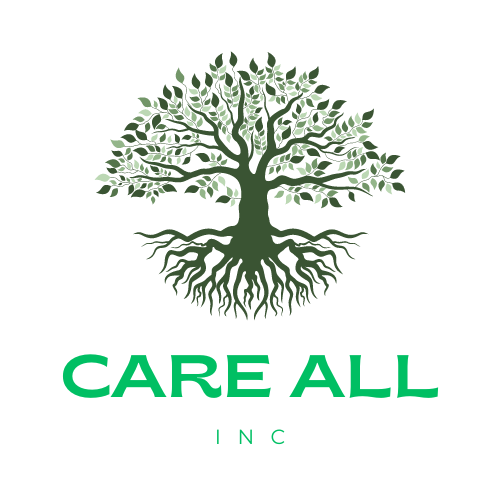Stepping into the gym for the first time can feel overwhelming. Between rows of intimidating equipment and seasoned lifters grunting through heavy sets, many beginners wonder where to even begin. The good news? Everyone started exactly where you are now.
Strength training isn’t just about building impressive muscles or lifting heavy weights. It’s one of the most effective ways to improve your overall health, boost your metabolism, and build confidence that extends far beyond the gym.
Whether your goal is to feel stronger in daily activities or develop a more athletic physique, the fundamentals remain the same. This comprehensive resource will walk you through everything you need to know as you begin your strength training journey.
From understanding basic movement patterns to creating your first workout routine, you’ll have the knowledge and confidence to start building the stronger version of yourself.
Understanding Strength Training Fundamentals
What Happens When You Lift Weights
Strength training creates microscopic tears in your muscle fibers. Your body responds by repairing these fibers with additional protein, making them slightly larger and stronger than before. This process, called muscle protein synthesis, is what leads to increased muscle mass and strength over time.
Your nervous system also adapts to strength training by becoming more efficient at recruiting muscle fibers. This explains why beginners often see rapid strength gains in their first few weeks—your muscles are learning to work together more effectively.
The Benefits Beyond Muscle Building
While muscle building might be your primary goal, strength training offers numerous additional benefits. Regular resistance exercise increases bone density, reducing your risk of osteoporosis later in life. It also improves insulin sensitivity, helping your body manage blood sugar more effectively.
Strength training boosts your metabolic rate, meaning you burn more calories even at rest. This makes it an excellent complement to any weight management strategy. Additionally, many people report improved mood, better sleep quality, and increased energy levels after establishing a consistent strength training routine.
Essential Equipment and Gym Setup
Starting With Basic Tools
You don’t need an expensive gym membership or elaborate home setup to begin strength training. A set of adjustable dumbbells, a sturdy bench, and some floor space can provide everything needed for effective beginner workouts.
If you prefer bodyweight exercises initially, you can start with absolutely no equipment. Push-ups, squats, lunges, and planks form the foundation of many successful strength training programs. As you progress, you might consider adding resistance bands or kettlebells to increase variety and challenge.
Navigating the Gym Environment
Commercial gyms offer access to a wide range of equipment, but they can feel intimidating for newcomers. Start by taking a tour during off-peak hours to familiarize yourself with the layout. Most gyms offer complimentary orientation sessions where staff can demonstrate proper equipment use.
Don’t feel pressured to use every machine or piece of equipment immediately. Focus on mastering a few basic movements with free weights or machines before expanding your repertoire. Remember that everyone was a beginner once, and most experienced lifters are happy to help if you ask politely.
Fundamental Movement Patterns
Upper Body Movements
The foundation of upper body strength training revolves around pushing and pulling movements. Push exercises like push-ups, overhead presses, and chest presses target your chest, shoulders, and triceps. Start with modified versions if standard push-ups feel too challenging initially.
Pull exercises work your back muscles and biceps through movements like rows and pull-downs. These movements are crucial for maintaining balanced muscle development and good posture. Begin with assisted versions or lighter weights to master the form before progressing to more challenging variations.
Lower Body Development
Your lower body contains some of the largest muscle groups in your body, making these exercises particularly effective for overall strength and muscle building. Squats and lunges target your quadriceps, hamstrings, and glutes while also improving functional mobility.
Hip hinge movements like deadlifts teach you to move at the hip joint while maintaining a neutral spine. This movement pattern translates directly to everyday activities like picking up objects from the floor. Start with bodyweight versions before adding external resistance.
Creating Your First Workout Routine
Full-Body Training Approach
Beginners typically benefit most from full-body routines performed three times per week. This approach allows you to practice movement patterns frequently while providing adequate recovery time between sessions. A typical full-body routine might include one exercise from each major movement pattern.
Each workout session should last between 45 and 60 minutes, including warm-up and cool-down periods. Focus on compound exercises that work multiple muscle groups simultaneously rather than isolation exercises that target single muscles. This approach maximizes your time efficiency and builds functional strength.
Progressive Overload Principles
Progressive overload is the gradual increase of stress placed on your body during exercise. This might mean adding more weight, performing additional repetitions, or increasing the number of sets over time. Without progressive overload, your muscles have no reason to continue adapting and growing stronger.
Track your workouts in a notebook or smartphone app to monitor your progress. Aim to make small improvements each week, whether that’s adding five pounds to an exercise or completing one additional repetition. Consistency in applying progressive overload is more important than dramatic increases in intensity.
Proper Form and Safety Considerations
Movement Quality Over Quantity
Perfect practice makes perfect. Learning proper form from the beginning prevents bad habits that become increasingly difficult to correct later. Start with bodyweight versions of exercises or very light weights to master the movement pattern before adding significant resistance.
Record yourself performing exercises or work with a qualified trainer to receive feedback on your form. Many common injuries in strength training result from poor technique rather than excessive weight. Prioritize movement quality over the amount of weight you can lift, especially during your first few months.
Recovery and Injury Prevention
Your muscles grow stronger during recovery periods, not during the actual workout. Plan at least one full day of rest between strength training sessions to allow your body to repair and adapt. Sleep quality and duration significantly impact your recovery, so aim for 7-9 hours of quality sleep each night.
Listen to your body and distinguish between normal muscle fatigue and potential injury. Delayed onset muscle soreness (DOMS) is normal and typically peaks 24-48 hours after a workout.
Sharp pains, joint discomfort, or persistent soreness that doesn’t improve with rest may indicate the need to modify your routine or consult a healthcare professional.
Nutrition for Muscle Building Success
Protein Requirements and Timing
Adequate protein intake supports muscle protein synthesis and recovery. Most research suggests consuming 0.8-1.2 grams of protein per pound of body weight daily for individuals engaged in regular strength training. Distribute this protein intake throughout the day rather than consuming it all in one or two large meals.
While protein timing isn’t as critical as total daily intake, consuming protein within a few hours of your workout can optimize recovery. Good protein sources include lean meats, fish, eggs, dairy products, legumes, and protein powders if whole food sources are insufficient.
Hydration and Overall Nutrition
Proper hydration supports performance and recovery. Aim to drink water consistently throughout the day rather than trying to compensate with large amounts immediately before or after workouts. Your urine color can serve as a rough indicator of hydration status—pale yellow typically indicates adequate hydration.
Don’t drastically restrict calories while beginning a strength training program. Your body needs adequate energy to fuel workouts and support recovery. Focus on eating a balanced diet with plenty of vegetables, whole grains, and healthy fats alongside adequate protein intake.
Tracking Progress and Setting Realistic Goals
Meaningful Metrics Beyond the Scale
Body weight alone doesn’t tell the complete story of your progress. Muscle tissue is denser than fat tissue, so you might gain weight while simultaneously improving your body composition. Take progress photos, body measurements, and track performance improvements in your workouts.
Keep a workout log that records the exercises performed, sets, repetitions, and weights used. Seeing consistent improvements in these metrics provides motivation and helps you identify which strategies are working best for your situation.
Realistic Timeline Expectations
Noticeable strength gains typically occur within 2-4 weeks of starting a consistent program. Visible muscle growth usually becomes apparent after 8-12 weeks of consistent training and proper nutrition. Remember that everyone progresses at different rates based on factors like genetics, age, training history, and lifestyle factors.
Set both short-term and long-term goals to maintain motivation. Short-term goals might focus on mastering proper form or consistently attending three workouts per week. Long-term goals could involve specific strength benchmarks or physique changes you’d like to achieve over several months.
Building Your Stronger Future
Starting your strength training journey might feel daunting, but every expert was once a beginner. The key lies in consistency, patience, and focusing on gradual progress rather than dramatic transformations. Remember that building strength is a marathon, not a sprint.
Begin with two or three workouts per week, focusing on mastering basic movement patterns with appropriate weights for your current fitness level. As you build confidence and strength, you can gradually increase the complexity and intensity of your routine.
The habits you build now will serve as the foundation for years of improved health, increased confidence, and physical capability. Take that first step into the gym or clear some space in your living room. Your stronger, healthier future self will thank you for starting today.






